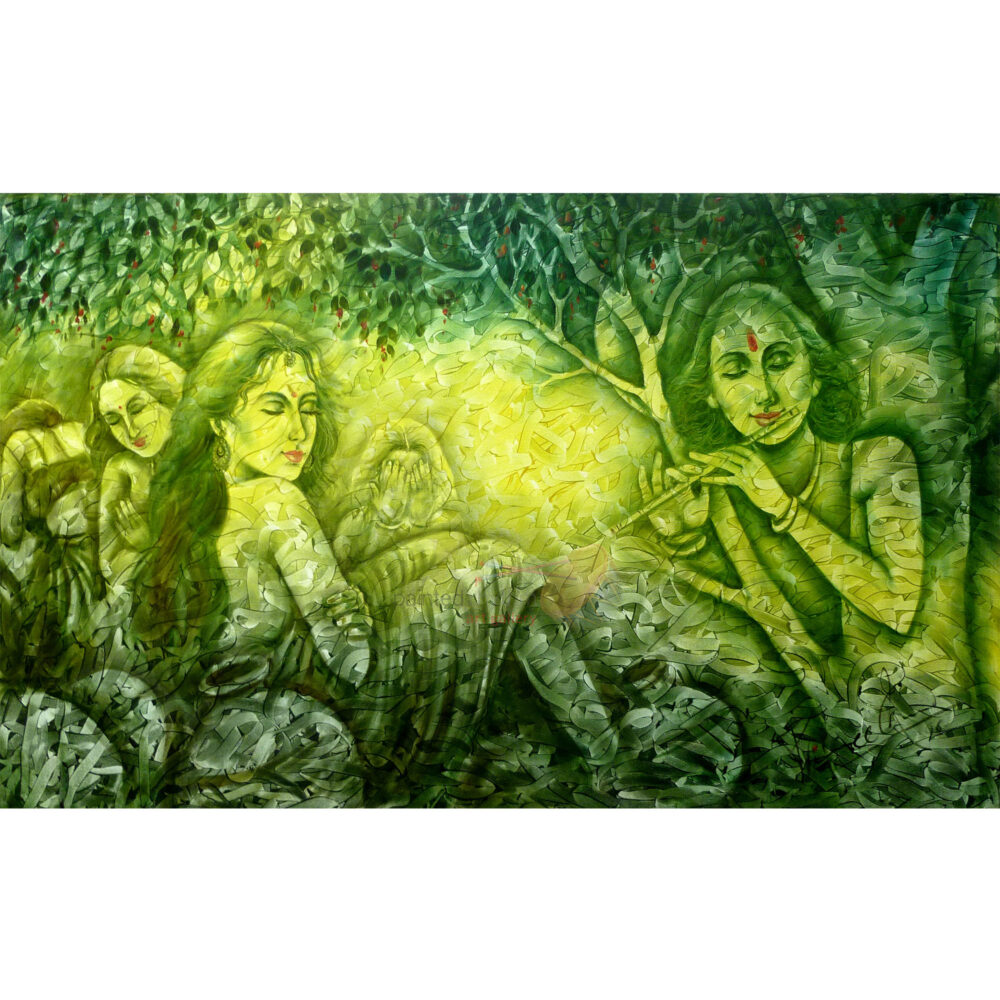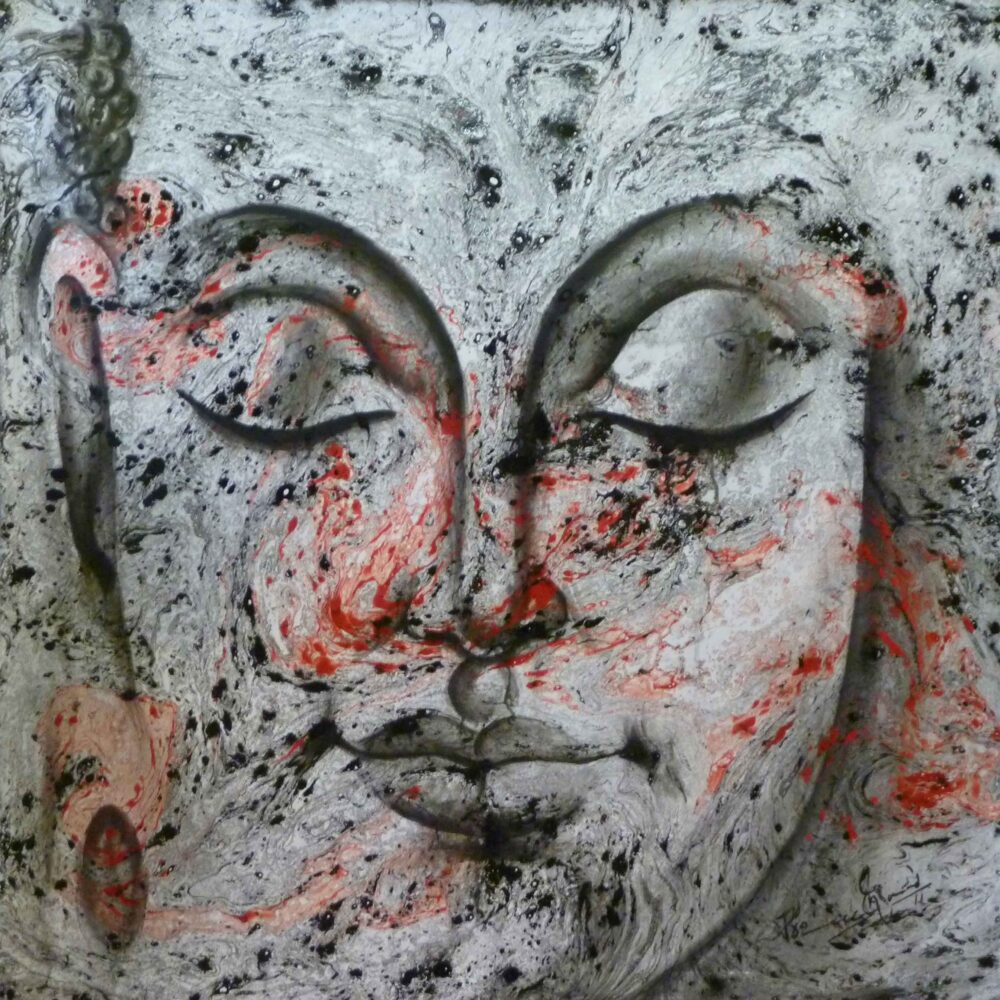DIVINE
In his work Prince Chand follows the logic of Indian aesthetic (Rasa, bhava, symmetry, ornamentation, philosophical text as well as the Indic image making techniques. His works are thus a convincing continuation of the foregoing vigorous art forms. After an intuitive as well as intellective grasping of the high points of temple art styles as of rock or cave art patterns, he has sought to transform them into contemporary or modern forms.
In this way he has utilized ancient motifs in fresh contemporary incarnation. Significantly achieved by focusing on aesthetic and almost sculptural techniques, like reorganizing cum breaking symmetry, the reorientation of the same, as the simplification of structures and rhythms, the modernization of traditional forms with a remarkable, indeed astonishing genius for culling out dazzling points of light in multifarious way in each otherwise sober-colored canvas using abstraction, is strongly done.
The present series of exhibited works have the immortal one ,the buddha, as the subject and who in Chand’s hand is in line with the icons is a tradition that configures divine love on myriad planes as the principal of peace that makes the world stay sound. Buddha is an earthly replica of the indissolubly fused whole. So the artist’s work on a principal as visualizes the energies of the supreme reality out of which comes peace. Chand’s creations are not creaturely but rather fired by keen imagination love permeates his immortal. The works are immaculate and impeccable in their crafting. In them is the feel of a great resolve, as of indestructible inner faith. It is thus the artist renews a hoary tradition. The embrace of love in its highest register means no other then a cessation of all disunion and conflict.
“In 2007, I had a dream in which I saw Lord Buddha standing on a river with a light passing through him. The light denoted enlightenment and this is precisely what I try to showcase in my paintings”. To give authenticity to his works on Lord Buddha, Prince Chand travelled to the Ajanta-Ellora caves to carefully observe and interpret works on Buddhist religious art. His other impressive works include his paintings on Lord Buddha, Mother Teresa, Radha-Krishna and Guru Nanak Dev.
-
-
Buddha – The divine
48 x 48 inches



